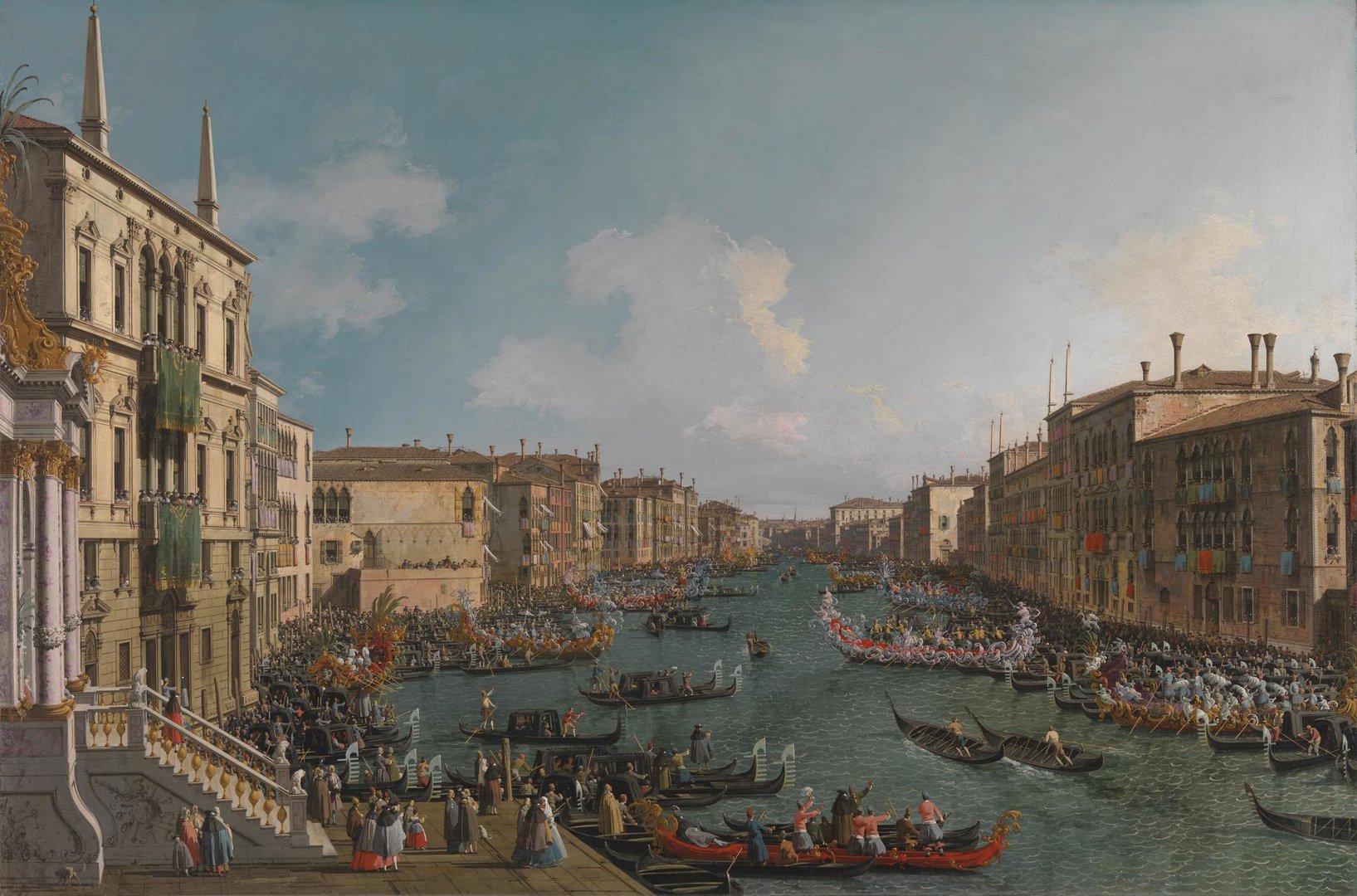Canaletto's 'A Regatta on the Grand Canal'
Audio description
This is a description of 'A Regatta on the Grand Canal', painted in oil on canvas in about 1740, by the Venetian artist Giovanni Antonio Canal, known as Canaletto, or ‘little Canal’. It is over a metre tall and almost two metres wide.
The painting shows an exciting outdoor scene on Venice’s main water thoroughfare, under a wide expanse of calm blue sky, which fills the top half of the painting. A gondola race, part of a regatta, is taking place. On either side of the wide Grand Canal the beautiful waterfront palaces, decorated with cloths in a rainbow of colour, recede sharply into the distance, in a steep perspective. In the distant background, where the waterway turns to the left, is the famous Rialto bridge.
Bright sunlight glints on the water, the gilded boats and the spectacular outfits of the crowd, who throng in their thousands. They throng from the balconies and the banks, or cheer from gondolas and lavishly decorated boats which line the route. The scene is a riot of colour, movement and noise, every inch crammed with intricate details .
The finely painted architecture of the palaces, fronting the canal, would be recognisable to visitors to Venice today, such as the Palazzo Balbi on the left of the painting, with tall obelisks on its roof. Other buildings are topped with spire-like chimneys, no longer there today..
Also on the left, in the foreground, is a white building with steps and columns, gleaming in pink and gold. This is the macchina della regatta - a temporary structure made from wood, plaster and papier mâché. This elaborate carnival float was built especially for the race, acting as the finishing line, where the prizes would be given out. Rowers would race past it, to the far end of the Grand Canal, turn around and then speed back up, to finish outside it. Two thin black gondolas are slicing up the middle of the canal, tilted over and jostling for position. Travelling away from us, each has a single gondolier, standing upright with one oar. A third gondola races into the picture from the right. The gondolas would have been rowed by people who used boats in their day-to-day jobs, each representing a different Venetian family. The most skilled rowers could become working-class heroes celebrated throughout the city.
The lavishly decorated boats lining the banks are bissone, eight-oared parade boats which would have started the regatta by leading a colourful procession. Some are adorned with golden mythological figures and animals, others have an oriental theme to their silvery decorations. The boats carry Venetian nobles, who recline on velvet cushions, and rowers in colourful uniforms.
Many of the distant figures are created with just a few skilful dots and flicks of paint, but in the foreground more detail has been added to the clusters of figures wearing purple and blue dresses under black cloaks. Several wear traditional white Bauta masks, black three-cornered hats and cloaks. These were not only worn at regattas but for various special events such as theatre and festivals.
These lavish spectacles attracted large numbers of visitors to the City each year, including wealthy, upper-class Europeans on the Grand Tour, which were trips for education and pleasure. Canaletto capitalised on their excitement and his views of Venice, known as ‘vedute’ were in high demand.
This work and its companion piece, The Basin of San Marco on Ascension Day, are among the grandest views of Venice that Canaletto made. He and his studio painted many versions, both with and without regattas taking place. No one bought more of these than the British. There are more paintings of Venice by Canaletto in one room of the National Gallery than there are in all of the public galleries in Venice!


